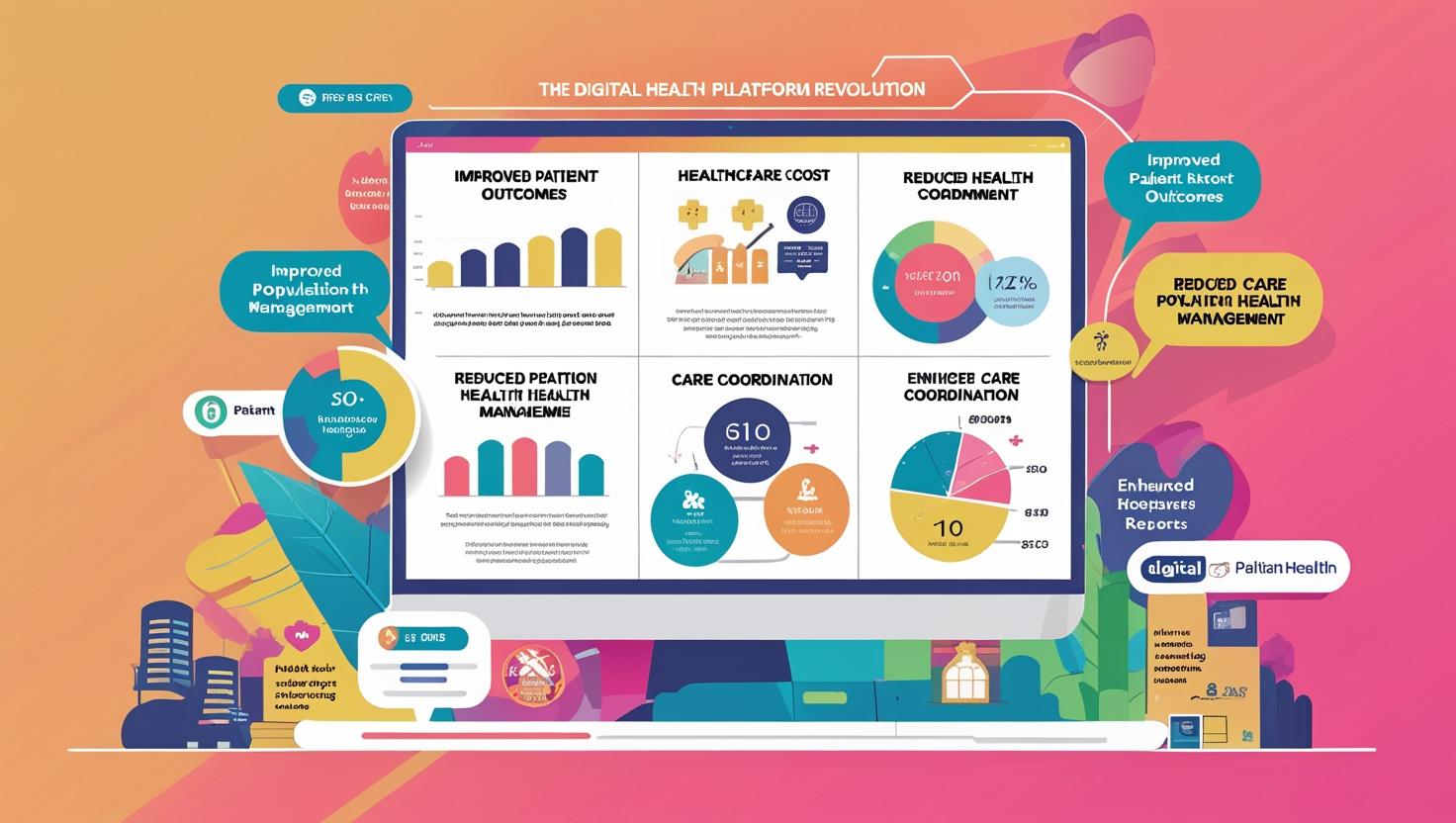One thing is certain in the rapidly changing healthcare landscape: disjointed systems are ineffective. Care teams are unable to make well-informed judgments because of clinical, financial, and operational silos. A robust digital health platform can help with that.
A digital health platform is more than simply a data warehouse or dashboard. It is a command center for healthcare operations that unifies automation, analytics, real-time data, and clinical intelligence. Additionally, it can revolutionize the way treatment is administered and managed when it is created with population health management in mind.
A Digital Health Platform: What Is It?
A digital healthcare platform aggregates information from several sources, such as patient interactions, ADT feeds, SDOH indications, IoT devices, and electronic health records. Predictive analytics, care coordination, risk scoring, quality monitoring, and patient engagement are just a few of the uses it powers by converting this raw data into actionable insights.
Retrospective data alone is not sufficient for a well-designed platform. By using AI models to evaluate patient status minute by minute, it makes real-time decision assistance possible. It records each clinical event, trend, or deviation as it occurs rather than hours or days later.
Why These Platforms Are Now Necessary in Healthcare
Medical staff are overburdened. Static report evaluations done by hand cannot match the pace of the actual world. Value-based care models are expanding, and managing results for a variety of groups is becoming more and more important.
Conventional systems are unable to:
- Give prompt, useful insights.
- Surface hazards in various environments (e.g., ED, IP, OP, SNF, Home, etc.)
- Encourage proactive care coordinating
- Track the performance of contracts in real time.
The Improvement of Population Health Management via Digital Health Platforms
Coordinated, ongoing treatment is essential for population health management. It entails being aware of which patients require outreach, which treatments are effective, and how each care activity affects more general performance indicators. A digital health platform facilitates this in the following ways:
- Adaptive Cohort Management: Real-time patient cohort creation and updating are based on changing social or clinical risk factors.
- Automation of the Care Pathway: Auto-start chores and care plans in response to clinical thresholds or circumstances.
- Contract Surveillance: View performance instantly against utilization goals, quality measures, and value-based care contracts.
- Integration of SDoH: Utilize socioeconomic determinants of health to modify risk models and treatment strategies.
- 360-Degree Patient View: Integrate information from devices, laboratories, HIEs, and EHRs to help guide choices.
AI-Powered Intelligence: Essential to Contemporary Platforms
AI is now required. Smart platforms make use of it in ways that have an immediate effect on population health:
- Stratification of Risk: Machine learning algorithms assess risk based on a variety of criteria, including social, behavioral, and clinical.
- Monitoring Events in Real Time: Platforms identify prescription non-compliance, ED visits, and patient decline in real time.
- Performance of Quality Measures: Automated mapping of patient events to standards such as eCQMs and HEDIS.
- Predictive Application: Expect readmissions, ED usage, or the development of long-term illnesses.
What Makes Robust Platforms Unique
According to Persivia, a strong digital health platform consists of:
| Feature | Impact |
| Longitudinal Patient Record | Tracks patient data over time, across care settings |
| Real-time Surveillance | Alerts teams instantly when patients meet risk criteria |
| Embedded Clinical Content | Supports 100+ programs, including chronic, acute, and preventive care |
| Automated Care Coordination | Task triggers for nurses, social workers, and pharmacists |
| Contract Performance Dashboard | Tracks outcomes, costs, and utilization against contract terms |
Applications in Which Digital Health Platforms Are Beneficial
- ED Avoidance: Use predictive cues to identify patients at higher risk. Send out care teams before a catastrophe arises.
- Monitoring Chronic Illnesses: AI monitors symptoms, blood pressure, and blood glucose changes. Adapt interventions as needed.
- After-Discharge Monitoring: Outreach and automated care plans, decrease referral loops, and lower readmission rates.
- Multi-program Arrangement: Utilize the same infrastructure to manage maternal health, diabetes, CHF, and mental health.
- Accountability under Contract: See the performance of your network instantaneously, from Medicare Advantage to ACOs.
Present Issues the Platform Needs to Fix
- Data Time Lag: Batch-processed, static data cannot meet the expectations of contemporary care.
- Restricted EHR Capabilities: EHRs are insufficient to support sophisticated population health initiatives.
- Separate Workflows: Rather than working together, clinical, administrative, and financial teams frequently operate in parallel.
- Separate Workflows: Rather than working together, clinical, administrative, and financial teams frequently operate in parallel.
- Poor Patient Involvement: Engagement fails without risk-based prioritization and outreach mechanisms.
Looking Ahead
The shift toward value-based care isn’t slowing down. Managing outcomes across diverse populations has become essential for organizational sustainability. Leading healthcare organizations understand that a comprehensive Care Management Platform is the foundation that enables successful population health management in an increasingly complex landscape.
With the right platform, you transform disconnected data streams into coordinated care delivery that benefits patients, providers, and your organization’s performance metrics. The question isn’t whether you need these capabilities. It’s whether you can afford to continue without them.
The path forward is clear: Embrace a Care Management Platform that puts you ahead of emerging risks rather than perpetually racing to catch up. Your patients, providers, and bottom line will thank you.















Leave a comment